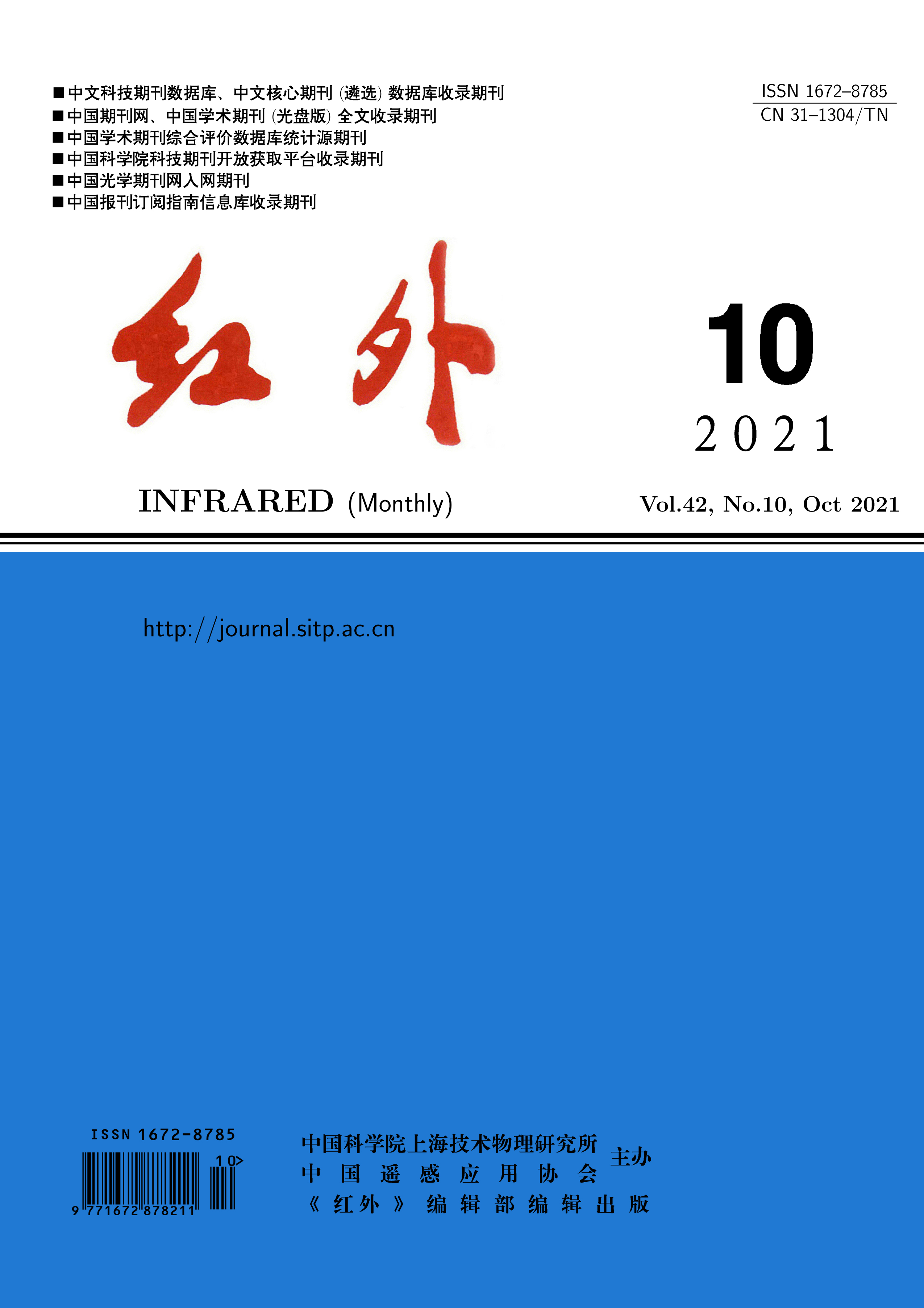
Due to the great advantages of high spectral resolution and integrated maps, hyperspectral imaging technology has developed significantly in the past 40 years. The current airborne and spaceborne hyperspectral payload-carrying platforms can cover a wide range of the earth′s surface, which are one of the most significant science and technological breakthroughs since the development of remote sensing technology. They have been successfully applied in military fields such as camouflage recognition, weapon production investigation, weapon use detection, offshore monitoring and anti-submarine, and have achieved significant military effects. The development history of hyperspectral imagers at home and abroad is reviewed, and the main characteristics of hyperspectral imagers onboard airborne and spaceborne platforms are summarized and analyzed.
The development of double-color detector at home and abroad is introduced. And the performance of the Si-based 320×256 SW/MW double-color infrared detector developed by the unit is reported. Under the test condition of 77 K, the blind element rates of the short wave(SW)and medium wave (MW)bands are 0.88% and 1.47% respectively. The average peak detection rate are 2.21×1012 cm·Hz1/2·W -1and 2.13×1011 cm·Hz1/2·W -1 respectively. The back cutoff wavelengths are 3.129 m and 5.285 m respectively. The spectral crosstalk from SW to MW band is 1.38%, the crosstalk from MW to SW band is 2.82%. At the same time, the detector has good imaging results in the dual-band, which provides a foundation for further research on multi-band detectors with larger array and better performance.
In long-wave infrared region, InAs/GaSb type-Ⅱ superlattice material has more superior performance than HgCdTe, thus has been widely studied. A series of experiments were carried out on the InAs/GaSb type-Ⅱ superlattice infrared detector to improve the technology level of back thinning. For GaSb single wafers, different single-point diamond turning (SPDT), mechanical chemical polishing and chemical polishing methods were studied. The machining damage was removed. Through the experiments of InAs/GaSb type-Ⅱ superlattice infrared devices, good infrared imaging pictures were obtained by the long-wave detector assembly, which can improve the technology level of InAs/GaSb type-Ⅱ superlattice long-wave infrared detector.
The bad pixel is one of the important indexes to measure the photoelectric performance of infrared detectors which is caused by material, technology and some other factors. In this paper, a line-scanning HgCdTe infrared detector is taken as the research object, and the bad pixel types of the detector are analyzed by various bad pixel detection methods. The analysis results are taken as the basis for accurately determining the number and location of bad pixels. By replacing the bad pixels, the images with good quality are obtained.
The infrared radiation characteristic of the target is one of the important infrared data for stealth performance evaluation and target recognition.The traditional infrared radiation inversion technology categorizes the targets into point targets and surface targets for processing respectively.Considering the influence of the flight attitude and range variation of the target, it is difficult to categorize the targets into point targets and surface targets by using the present infrared radiation characteristic data. A general method for measuring infrared radiation characteristics is proposed in this paper, which can unify the processing of target characteristics and simplify the data processing mode. In this paper, the accuracy of target inversion is verified by using this method based on the measuring system of medium wave infrared radiation characteristics of 600 mm caliber. The target data is processed respectively under the conditions of 2000 s and 3000 s integration time, which proves the effectiveness of the proposed algorithm. This method has certain engineering application significance.
The scale factor of large laser gyroscope has a strong dependence on the geometric deformation of the ring cavity. According to the structure and working characteristics of the large laser gyroscope, the key technologies affecting the measurement accuracy are studied, and the geometric deformation of the ring cavity which affects the scaling factor is calculated and analyzed. The variation of the scaling factor after the geometric deformation of the ring cavity is obtained. In addition, the optimization method of the scale factor of the ring cavity is presented, and the variation of temperature and stress on the scale factor is given. It is concluded that when the production conditions, working environments and cavity structures are same, the compensation of scale factor is beneficial to the improvement of measuring accuracy of large laser gyroscope.
Under the condition of information warfare, a variety of reconnaissance and surveillance equipments(such as satellite, radar, UAV group, etc)can acquire massive battlefield information and data. How to effectively utilize the massive multiple source isomerism information to improve the intelligence degree and strike precision of UAV is a hot research field. Based on the introduction of the development status of knowledge graph and artificial intelligence, the knowledge graph is constructed aiming at the goal of guiding UAV to complete intelligent strike, and a solution is given combining with specific war requirements and scene characteristics.










